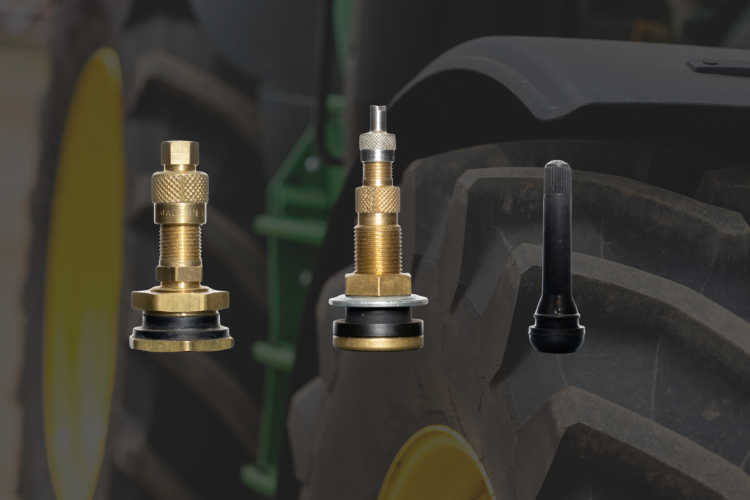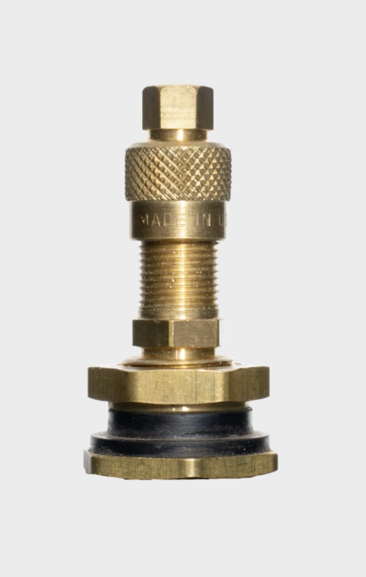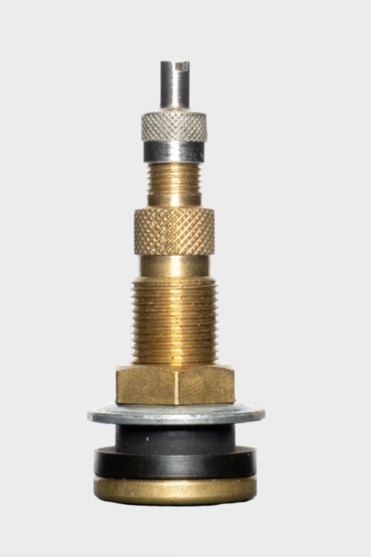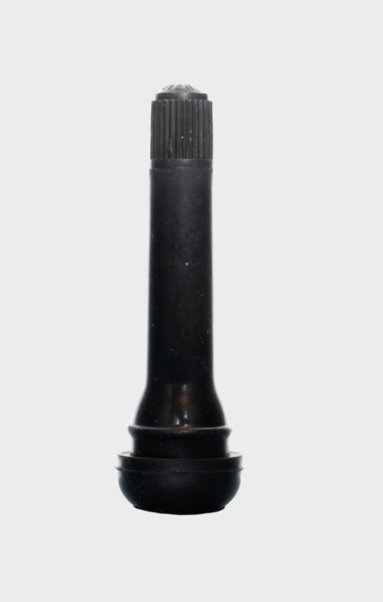Tire Ballast
•
4
min read

Just like tire ballast, not all valve stems are the same.
It’s very important to select the right valve stems for your tire when using liquid tire ballast. Selecting the right valve stems will maximize the safety and performance of your equipment and keep your equipment rolling with no leaks or damage. Consider these 3 things when installing liquid tire ballast and picking a valve stem.
It is important when installing liquid tire ballast that you have the industry standard valve stems capable of handling air and liquid.
There are three types of valve stems to look for:



You will want to have a metal valve stem capable of holding air and liquid. Metal (air/liquid) stems usually have a two-piece construction with a removable upper half (valve core housing), allowing access to the larger bore for faster and easier fluid installation and evacuation. See the photos in section one for what those look like.
Rubber valve stems are not manufactured with the intent of holding liquid in a tire. Rubber valve stems are constructed with adhesive to hold the core in place. When the adhesive is in constant contact with any liquid tire ballast, the adhesive softens and the components will separate, causing the contents in the tire to potentially leak out.
Place the valve stem at the 12:00 position when getting your tire filled. A great option for tire ballast is Rim Guard. Certified Rim Guard dealers will know the proper way to install the liquid. (If you’re interested in getting Rim Guard installed in your tires, just visit https://www.rimguardsolutions.com/find-a-dealer to find a dealer near you.)
You will also want the valve stem to be at the 12:00 position to check your air pressure. This allows the liquid tire ballast to settle at the bottom of the tire, and this will minimize the amount of liquid that could come out when you check the air pressure.
You will also want to make sure you are using a tire gauge designed for liquid-filled tires so you get the most accurate reading. Before taking your reading, clear any liquid from the valve stem by briefly blasting compressed air into the tire. Always refer to your tractor's operator's manual for the recommended tire pressure for your specific tractor model and tire size.
There are many things that make Rim Guard a great option for a tire ballast. Rim Guard is formulated using a byproduct of sugar beet production as its primary raw material. What makes this raw material such an effective liquid tire ballast is its organic makeup, which provides significant weight (10.7 pounds per gallon), freeze protection (staying in liquid form until -35°F) and is non-corrosive.
Rim Guard is available in the United States and Canada and can be installed by a trusted dealer near you. To learn more about Rim Guard visit https://www.rimguardsolutions.com/about.
By following choosing a metal air liquid agriculture valve stem you will make sure that you get the most out of your tire ballast. You will also get the benefits of a valve stem that can hold up to the rigors of the work you are doing with your tractor. Choosing Rim Guard as a tire ballast comes with all the advantages of liquid tire ballast without the risks of chemical options to the environment, machinery, animals or people.
If you have questions or concerns about Rim Guard Beet Juice Tire Ballast, please call us at 616-608-7745 or email info@rimguardsolutions.com.
If you want additional information or are interested in becoming a dealer, please fill out the form at https://www.rimguardsolutions.com/become-a-dealer or email info@rimguardsolutions.com to schedule a quick, 15-minute phone call.